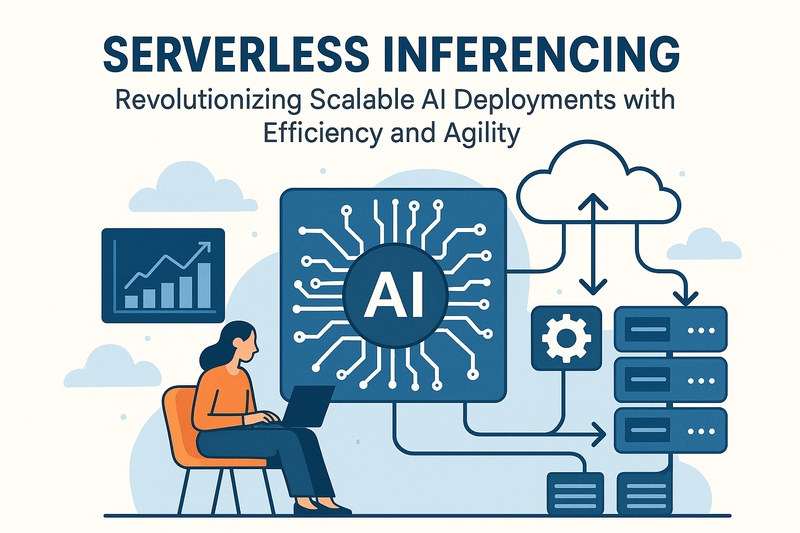In the evolving landscape of artificial intelligence (AI), delivering real-time, accurate predictions without the burden of managing complex infrastructure has become a defining challenge for enterprises. Enter serverless inferencing—a paradigm shift that enables organizations to deploy AI inference workloads elastically, efficiently, and with minimal operational overhead.
What Is Serverless Inferencing?
Serverless inferencing refers to the deployment and execution of AI model inference workloads on cloud platforms that automatically manage compute resources. Unlike traditional AI deployments, where infrastructure capacity needs to be provisioned upfront (often leading to underutilization or bottlenecks), serverless inferencing dynamically allocates GPU or CPU resources based on real-time demand. This means applications only consume and pay for the exact computing power they need when they need it—no more, no less.
Core Advantages of Serverless Inferencing
- Scalability on Demand
Serverless inferencing platforms can instantly scale from zero to thousands of concurrent inference requests, accommodating sudden spikes in traffic without pre-planned hardware investments. This elasticity makes it ideal for AI workloads with fluctuating user interactions, such as chatbots, image recognition, and fraud detection.
- Cost Efficiency
Traditional AI hosting often requires costly GPUs or servers to be run continuously to meet peak demand. Serverless inferencing cuts waste by employing a pay-per-use model, eliminating idle infrastructure expenses, and significantly lowering the total cost of ownership.
Reduced Operational Complexity
With serverless setups, teams no longer need to worry about provisioning servers, patching software, or managing cluster scaling. This frees data scientists and developers to focus on improving AI models and delivering business value, rather than infrastructure management.Improved Time-to-Market
By using serverless inferencing, organizations can deploy AI models rapidly, testing and iterating in production environments without long configuration cycles. This accelerates innovation, allowing businesses to respond swiftly to customer needs and market changes.
Technical Considerations for Serverless Inferencing
Cold Start Latency: To minimize startup delays when scaling out, advanced techniques like dynamic batching and caching mechanisms are often employed.
Model Optimization: Techniques such as quantization, pruning, and tensor optimization help reduce model size and inference time to boost performance on serverless platforms.
Multi-Model Serving: Serverless frameworks support serving multiple AI models from shared resources, aiding in consolidating inferencing workloads and optimizing cost.
Security & Compliance: Given data sensitivity in AI applications, secure execution with encryption, role-based access control, and audit logging is critical.
Use Cases Showcasing Serverless Inferencing
Real-Time Fraud Detection: Adaptive scaling to analyze millions of transactions during high-risk periods efficiently.
Personalized Recommendations: E-commerce sites handling fluctuating traffic during peak shopping seasons without over-provisioning.
Healthcare Diagnostics: Scalable inference for medical imaging analysis, ensuring low latency during emergency care.
Voice Assistants and Chatbots: Supporting millions of simultaneous users with elastic resource management.
The Future of Serverless Inferencing
As AI models grow larger and more complex, serverless inferencing platforms will continue evolving to support advanced techniques such as distributed inference and edge-cloud hybrid deployments. Innovations in GPU virtualization, inference acceleration, and auto-scaling algorithms will further reduce latency and operational costs.
Conclusion
Serverless inferencing represents a fundamental transformation in how AI workloads are deployed and managed. By delivering scalable, cost-effective, and agile inferencing capabilities, it empowers organizations to unlock the full potential of AI—without the traditional trade-offs of infrastructure management. The adoption of serverless inferencing is no longer a question of if, but how swiftly enterprises can embrace this efficient approach to AI deployment.




Top comments (1)
Wellness Wednesday Quotes: Balance like AI be efficient, adaptable, and always evolving.quotesslide.com/wellness-wednesday...